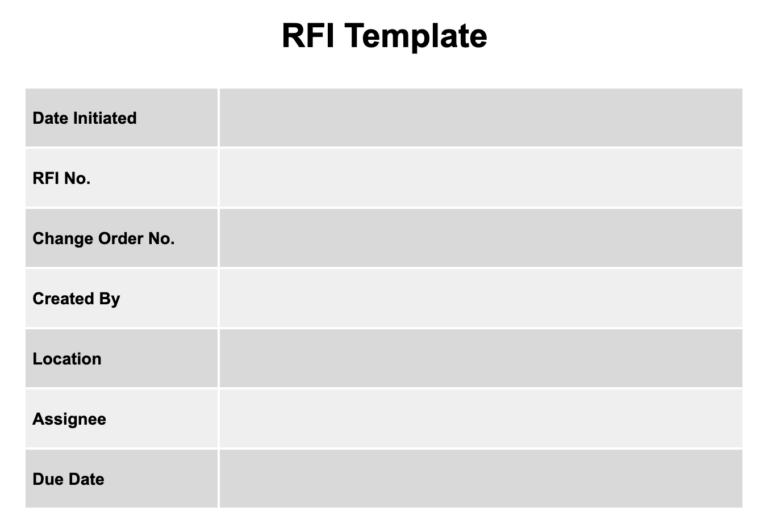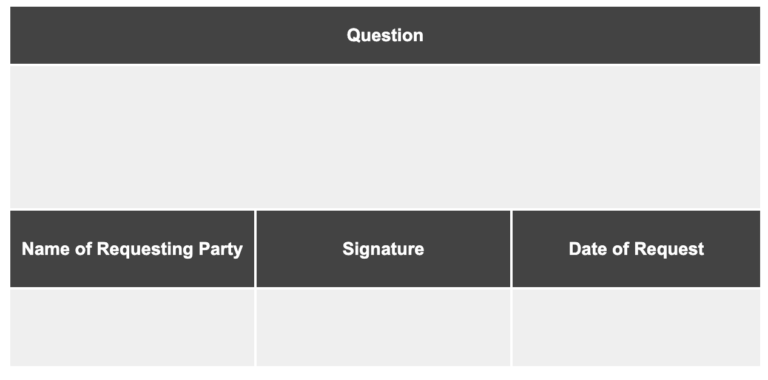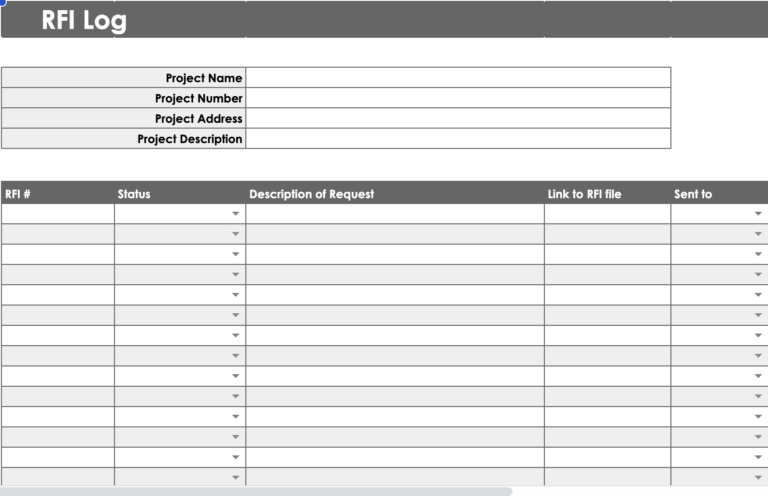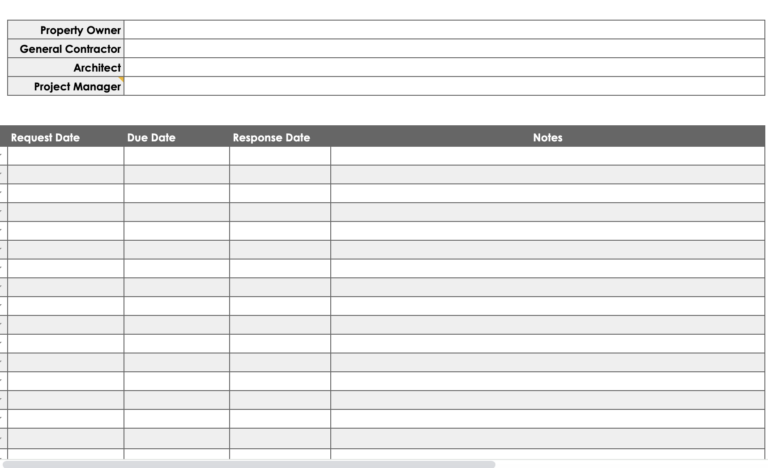

When questions or issues arise on a construction project, it’s important to make sure everyone is on the same page. A request for information (RFI) is a document intended to clarify details that are ambiguous or absent in the construction specifications and drawings.
An RFI is an official document that a party involved in a construction project can use for requesting information or clarification related to the scope of work or contract documents of a project. When additional details are sought, RFIs are sent up from general contractors and subcontractors to the design team (engineer, architect, owner).
RFIs promote open, transparent communication between contractors and the design team. Each RFI includes a deadline to receive the answer, so they also help keep projects on schedule. In an industry plagued by delays and poor communication, RFIs can be incredibly useful.
On this page, you’ll find free RFI templates for different scenarios that arise on a construction project, as well as some information about how to use them.
Table of contents
These RFI templates were created by construction professionals to help contractors and project owners manage requests for information on a project. Project participants can use these forms to request additional information or clarify ambiguous specifications, and track the responses and status of each request.
Download and customize a general-use RFI template to request more detail or clarification about drawings, specifications, schedules — or get answers to any questions about a project.
For use on projects when an RFI form is not specified Ready-to-use Designed specifically for construction Free Download (Google Docs) Free Download (PDF)


General contractors and design teams use an RFI log to track RFIs submitted throughout the construction project, along with the responses received and the status of each request. Download and customize this RFI log template to track RFIs submitted throughout a project.
Customizable to project requirements Ready-to-use Made by and for construction professionals Free Download (Google Sheets) Free Download (Excel)


Any party on a project can use an RFI for questions they want to ask officially, but there are some situations where RFIs are common. Below we’ll look at some common instances where an RFI is most useful.
In construction, it’s not uncommon for gaps in communication between the design team and contractors to arise. An RFI can address any confusion or vagueness in plans to help contractors complete their scope of work with certainty.
For example: If a painting contractor doesn’t have the exact color depicted in the specs for an office wall, they’d submit an RFI to the design team to get the specific color. This eliminates the possibility of the contractor using the wrong shade of the color the design team wants.
Additionally, it can save contractors and the design team from the hassle of going back and forth to determine the correct color for the wall.
Contractors may also send an RFI when preparing an estimate. If they have a question about the work involved, such as an answer to the RFI may provide the information they need to prepare an estimate.
For example, if a contractor is preparing an estimate for the concrete scope of work on a project, but doesn’t know what type and strength of material to provide, they would submit an RFI to the architect or engineer asking for the specific details.
During the bidding phase of a project, a contractor might use an RFI to request information about the work or materials required to complete the project. It’s difficult to prepare a fair and accurate bid without understanding the whole picture.
While RFIs related to the construction specs can be submitted during any phase of construction, it’s helpful to clear up the details during the bidding phase so contractors can put together an accurate bid for the work.
When issues arise on a construction project, a contractor with foresight might send an RFI to the architect, owner or engineer requesting a solution to the problem. Often, the goal is to get an answer before the issue throws the project off schedule. If the solution to the problem involves a change to the scope of work originally outlined in the contract documents, a change order request may follow the RFI.
Subscribe to Blueprint, Procore’s free construction newsletter, to get content from industry experts delivered straight to your inbox.

RFIs aren’t highly regulated by the states in the U.S., so there are several different ways to create an RFI. There are, however, some basic elements that RFIs should include. These help keep the RFI streamlined and easy to understand — which is essential for receiving a timely answer.